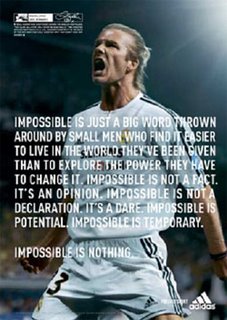1) How does Mistry suggest advertising has changed since the mid-1990s?
Ministry suggests that the advertising industry has changed due to peoples attitudes with the adverts being seen as more appealing by conveying gender and sexual orientation of the people.
2) What kinds of female stereotypes were found in advertising in the 1940s and 1950s?
In the 1950's women magazines led to the claim of 'female mystique' referring to "the highest value and the only real commitment for women lies in fulfilment of their own femininity. The highest good is keeping house and raising children". The developed due to the social economic boom, and products found in the kitchen had featured women to make them go out and purchase the product.
3) How did the increasing influence of clothes and make-up change representations of women in advertising?
The clothing and make-up industry had led to images of women being portrayed using the make-up . A example used is a perfume advert has a 'fair maiden' which is using the product then leading to being with a man which then is revealed to be a dream, this hows that it is a dream that a woman has, and may get using the perfume.
4) Which theorist came up with the idea of the 'male gaze' and what does it refer to?
The theorist Laura Mulvey had come up with the 'male gaze', the idea that adverts of women are used to be passively observed by men as they find a sense of enjoyment, the idea shows the male empowerment that is seen by companies and how they can be attracted towards a product.
5) How did the representation of women change in the 1970s?
The representation of women changed in the 70's when there was a new idea in place of men having the power to look upon women how they wanted to, the idea to advertisers to use women to appeal to them was seen as a way to market to them.
6) Why does van Zoonen suggest the 'new' representations of women in the 1970s and 1980s were only marginally different from the sexist representations of earlier years?
This is due to the deconstruction of an advert that was done in which was concluded that the woman is shown confidently stepping forward in a office but is not working rather the men who are working are looking at her being distracted by their work. Suggesting that women are the man's biggest distraction and that they may not be suitable for office work.
7) What does Barthel suggest regarding advertising and male power?
Barthel suggests that women in the modern day are able to bypass these walls being set by society without offending the male counterpart, as there is no difference happening genetically but only the change of people and heir attitudes to one another and their views.
Ministry suggests that the advertising industry has changed due to peoples attitudes with the adverts being seen as more appealing by conveying gender and sexual orientation of the people.
2) What kinds of female stereotypes were found in advertising in the 1940s and 1950s?
In the 1950's women magazines led to the claim of 'female mystique' referring to "the highest value and the only real commitment for women lies in fulfilment of their own femininity. The highest good is keeping house and raising children". The developed due to the social economic boom, and products found in the kitchen had featured women to make them go out and purchase the product.
3) How did the increasing influence of clothes and make-up change representations of women in advertising?
The clothing and make-up industry had led to images of women being portrayed using the make-up . A example used is a perfume advert has a 'fair maiden' which is using the product then leading to being with a man which then is revealed to be a dream, this hows that it is a dream that a woman has, and may get using the perfume.
4) Which theorist came up with the idea of the 'male gaze' and what does it refer to?
The theorist Laura Mulvey had come up with the 'male gaze', the idea that adverts of women are used to be passively observed by men as they find a sense of enjoyment, the idea shows the male empowerment that is seen by companies and how they can be attracted towards a product.
5) How did the representation of women change in the 1970s?
The representation of women changed in the 70's when there was a new idea in place of men having the power to look upon women how they wanted to, the idea to advertisers to use women to appeal to them was seen as a way to market to them.
6) Why does van Zoonen suggest the 'new' representations of women in the 1970s and 1980s were only marginally different from the sexist representations of earlier years?
This is due to the deconstruction of an advert that was done in which was concluded that the woman is shown confidently stepping forward in a office but is not working rather the men who are working are looking at her being distracted by their work. Suggesting that women are the man's biggest distraction and that they may not be suitable for office work.
7) What does Barthel suggest regarding advertising and male power?
Barthel suggests that women in the modern day are able to bypass these walls being set by society without offending the male counterpart, as there is no difference happening genetically but only the change of people and heir attitudes to one another and their views.

Comments
Post a Comment